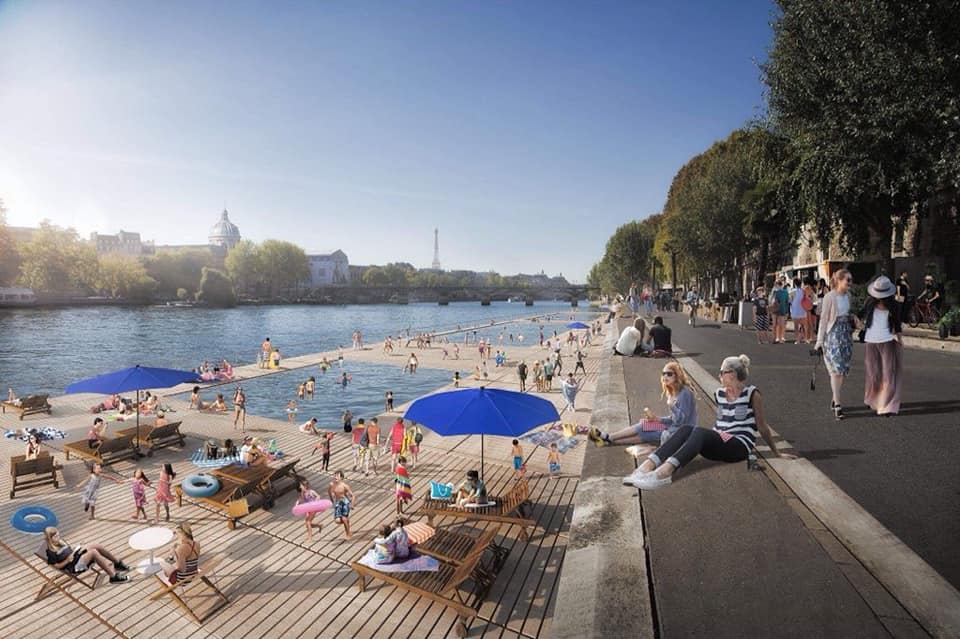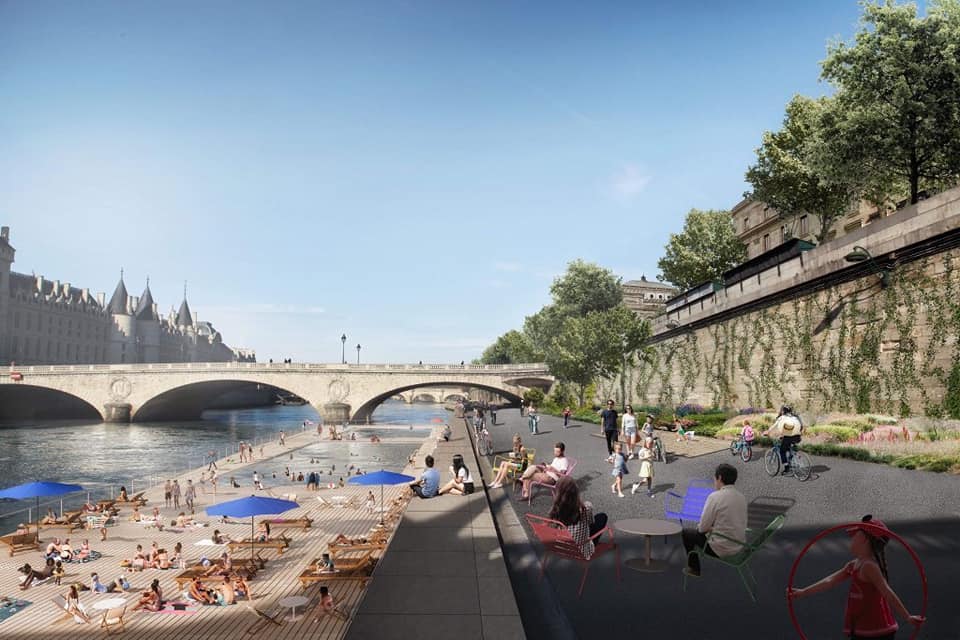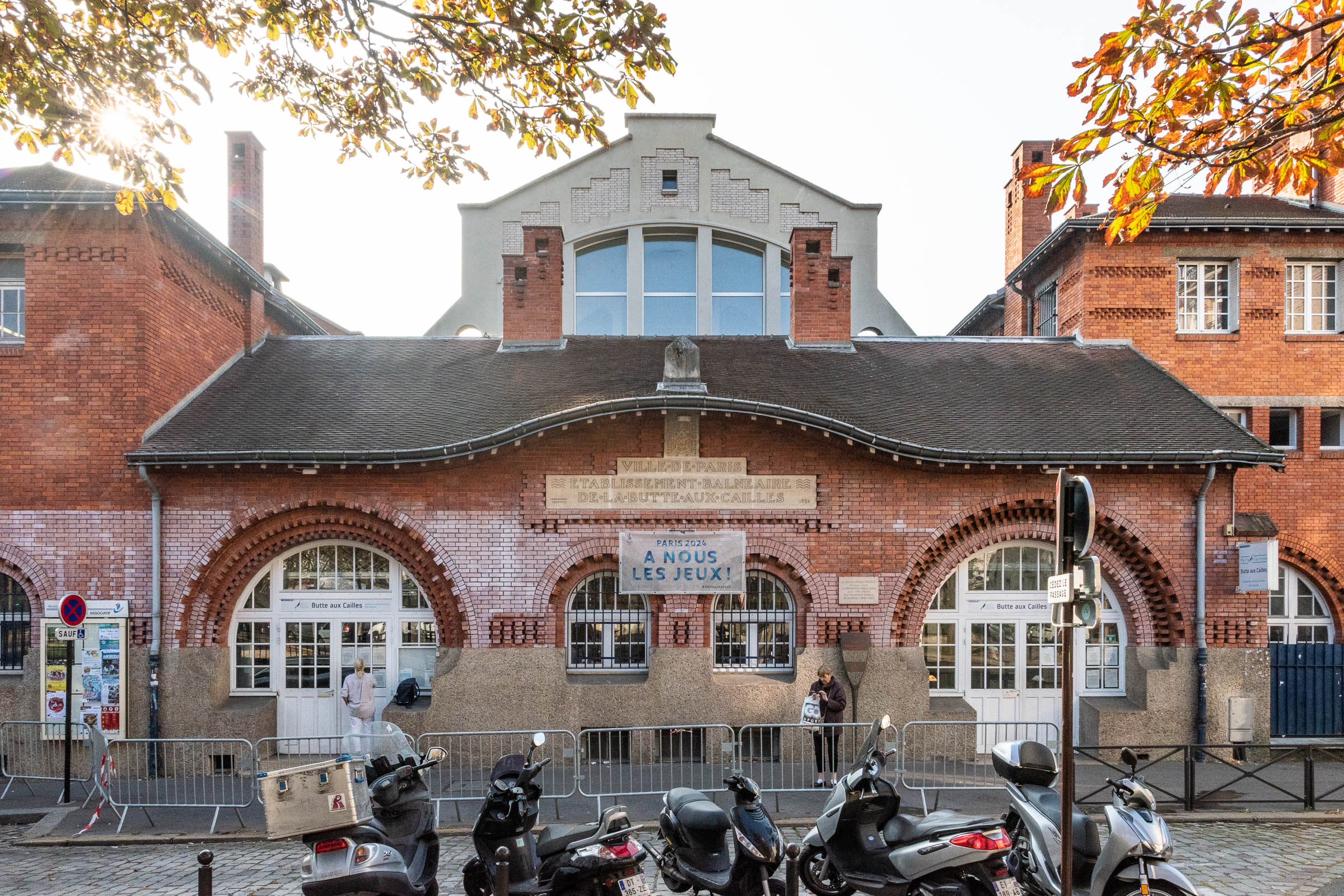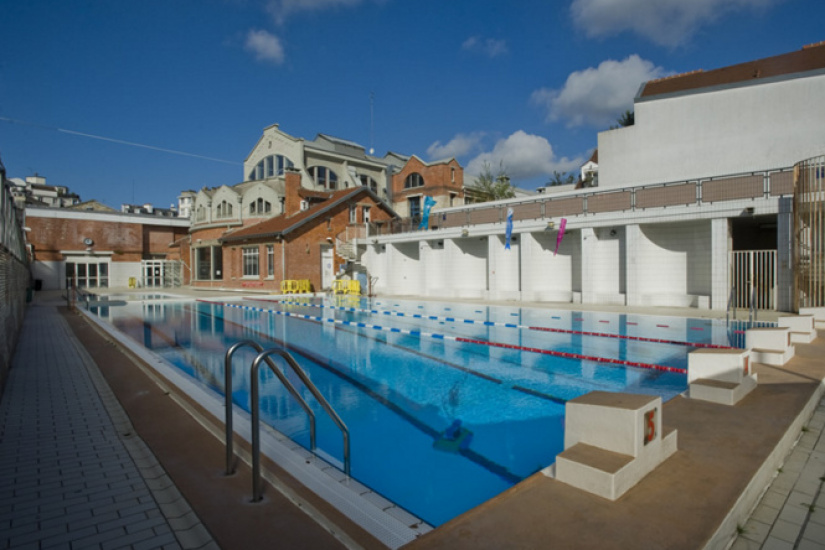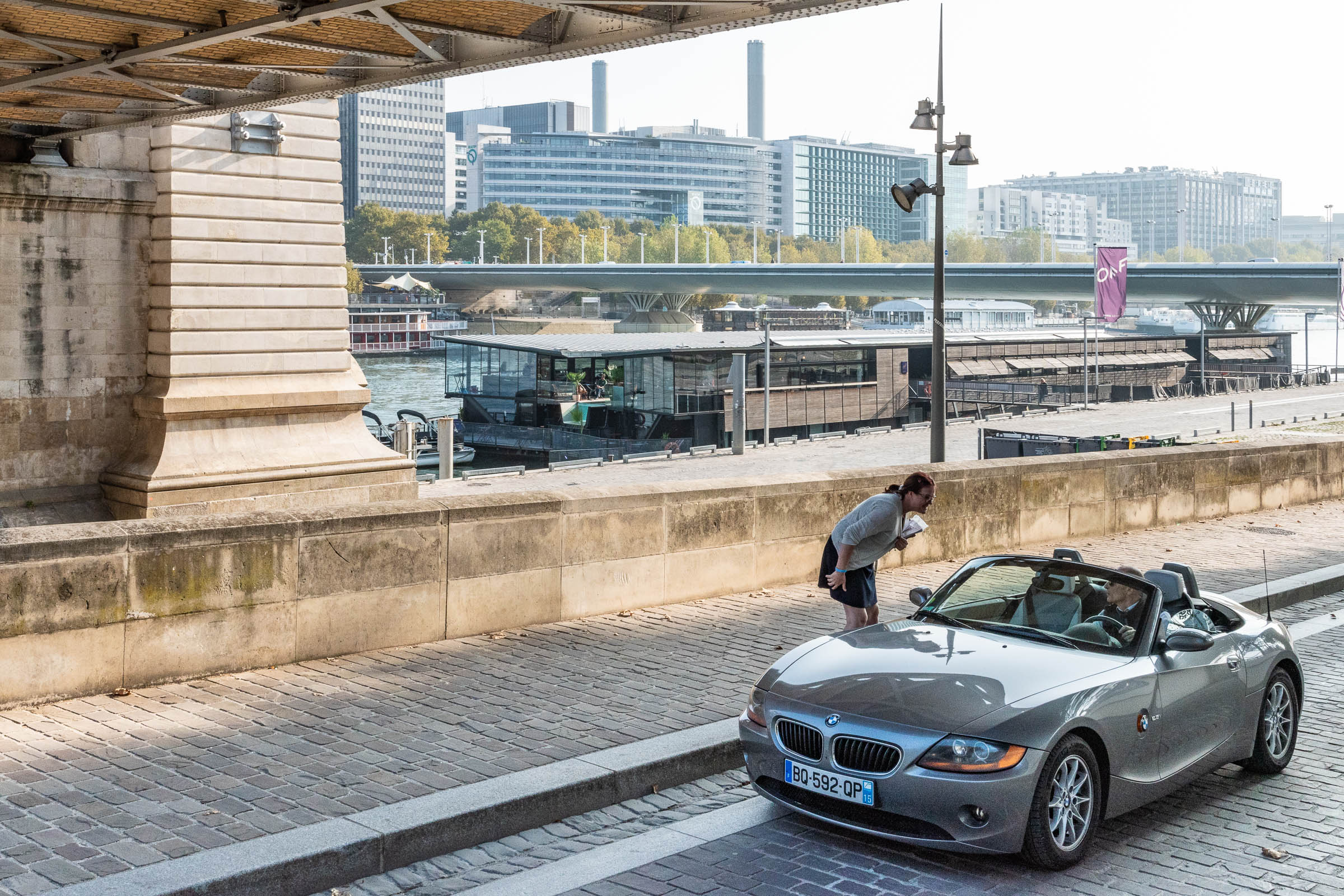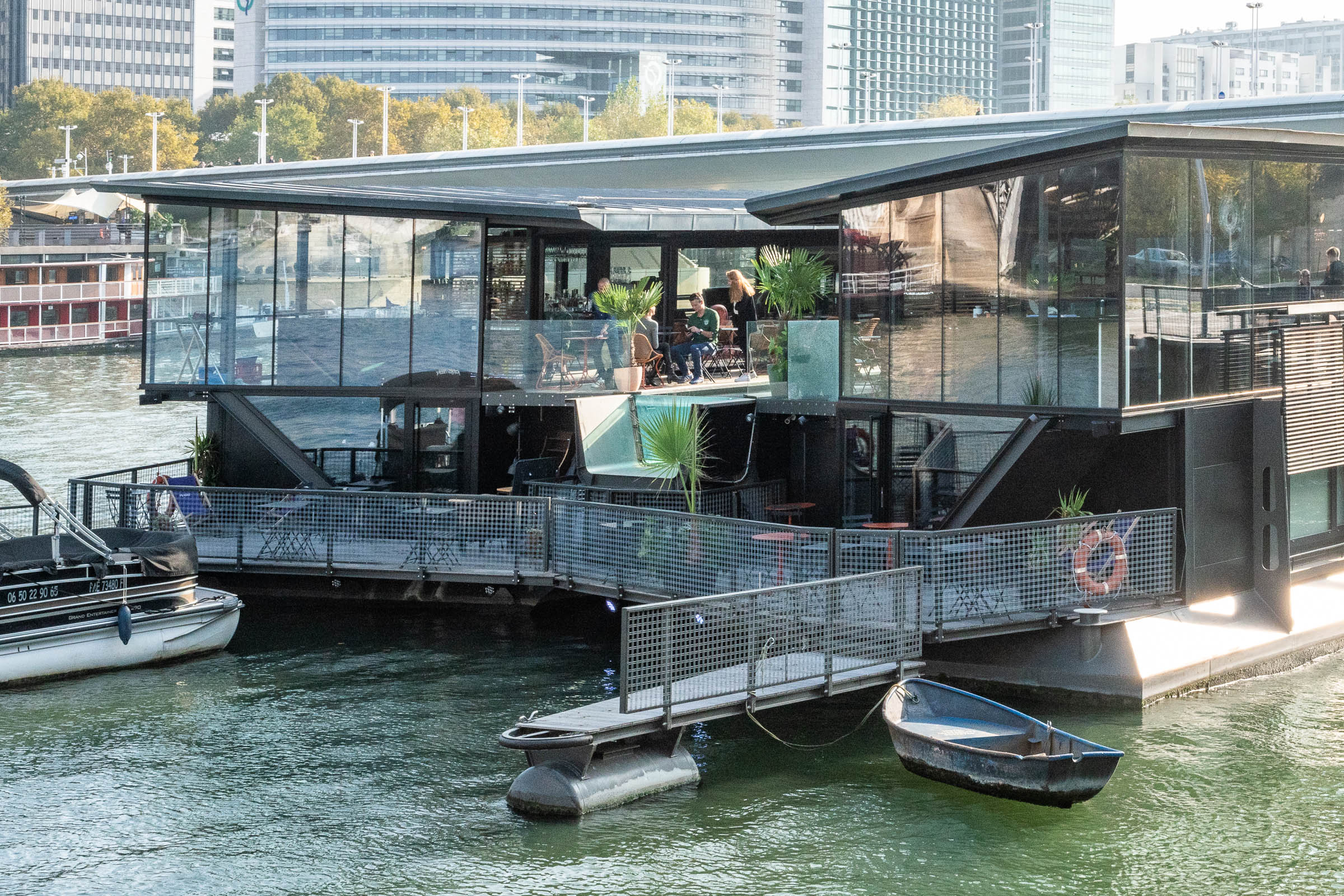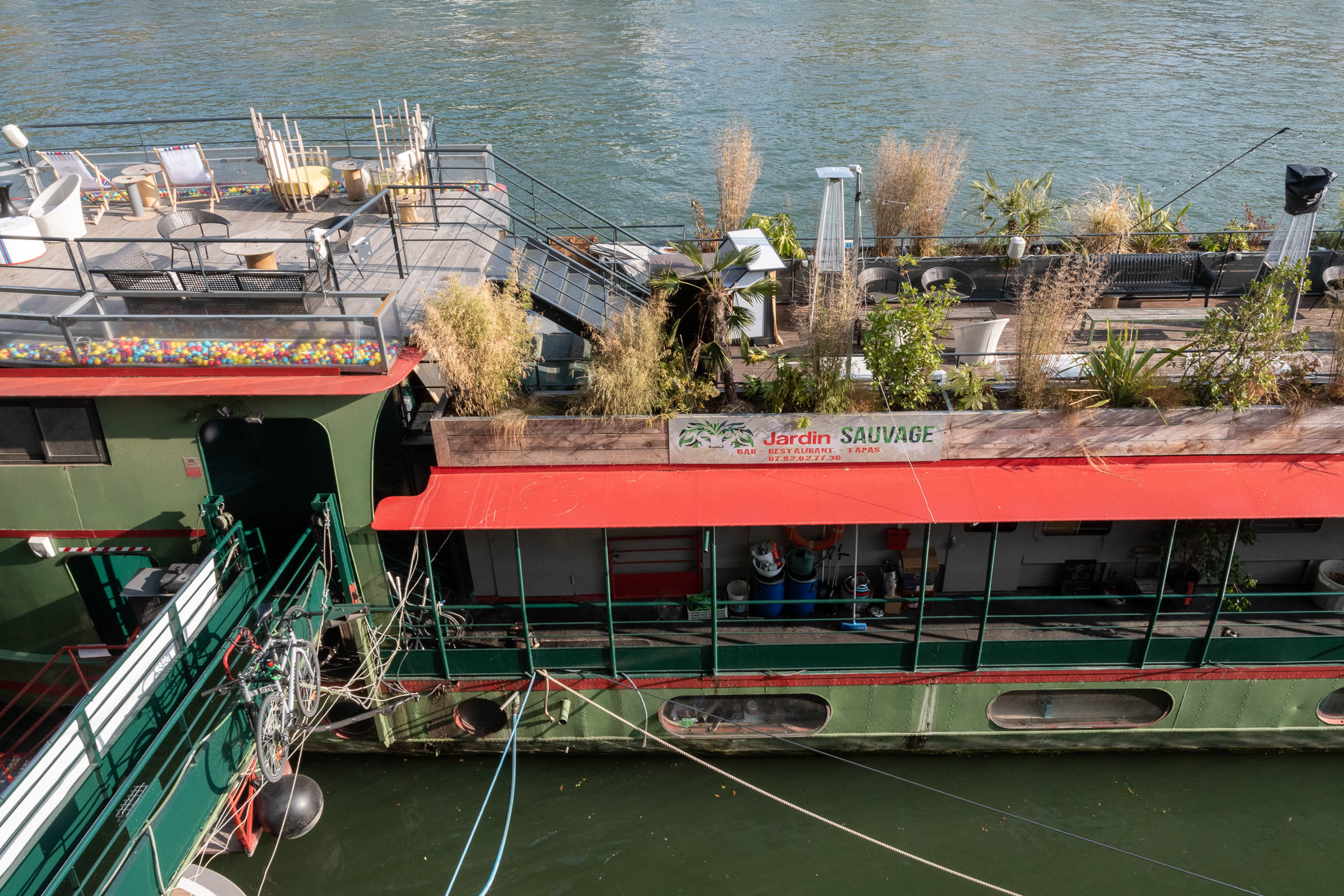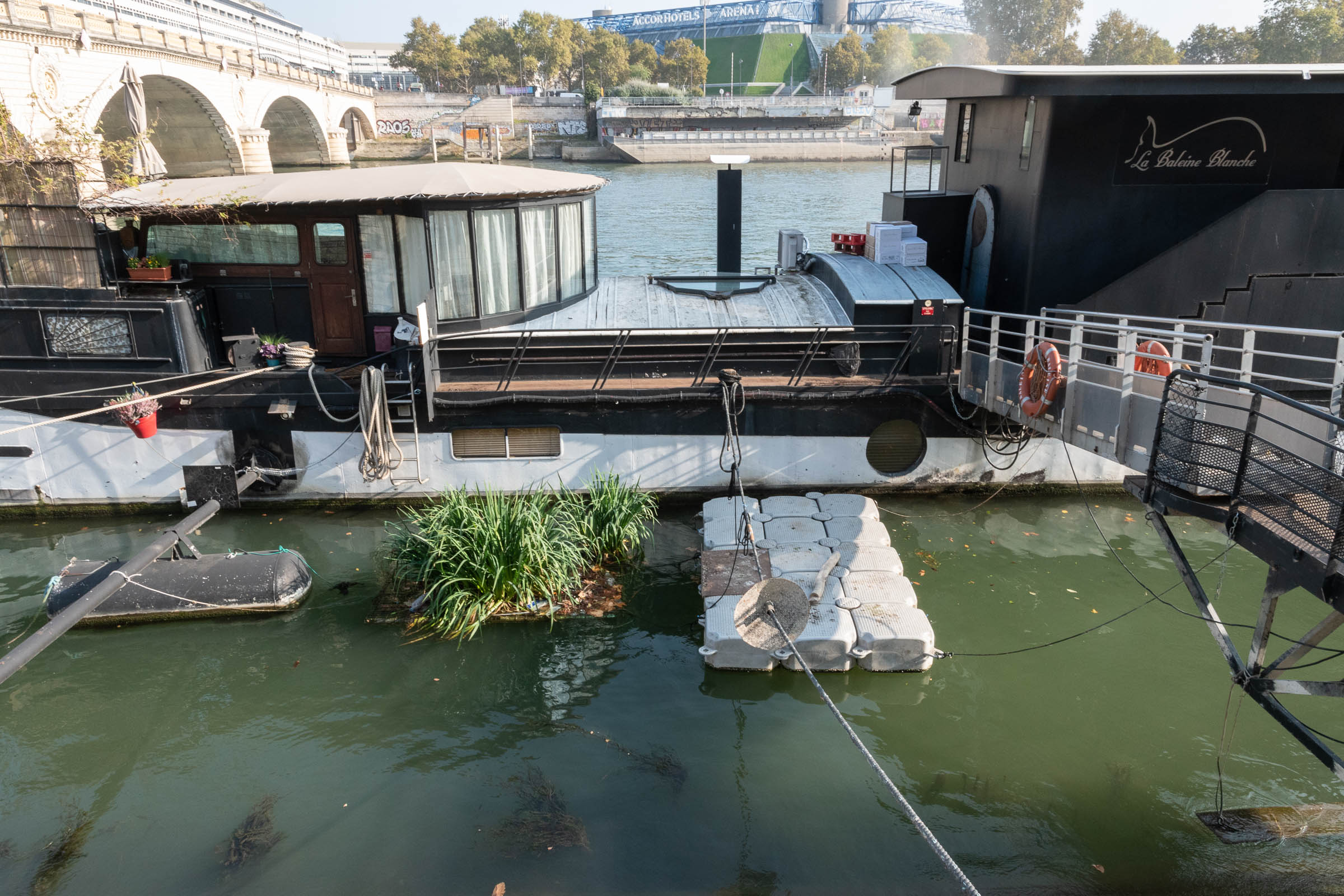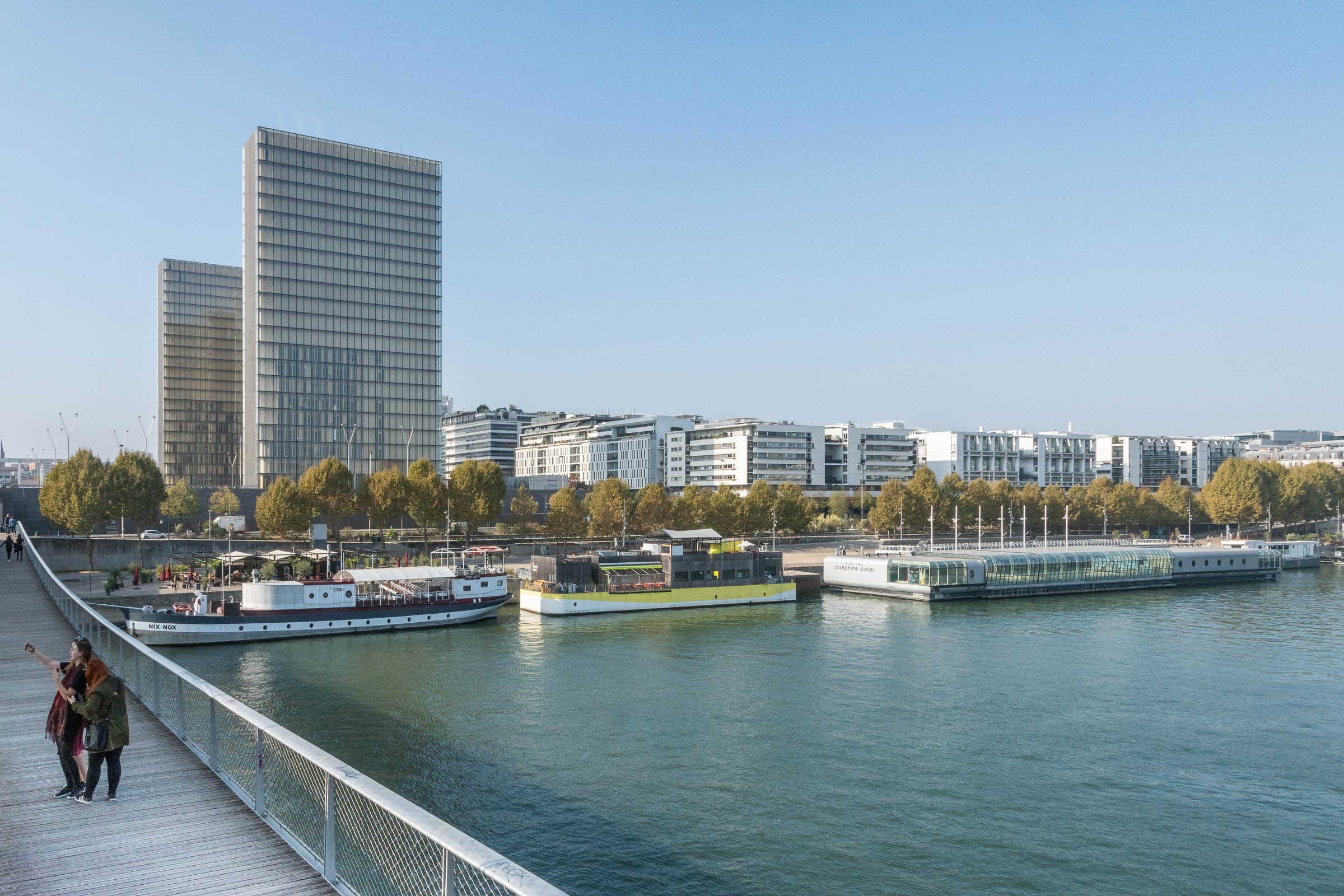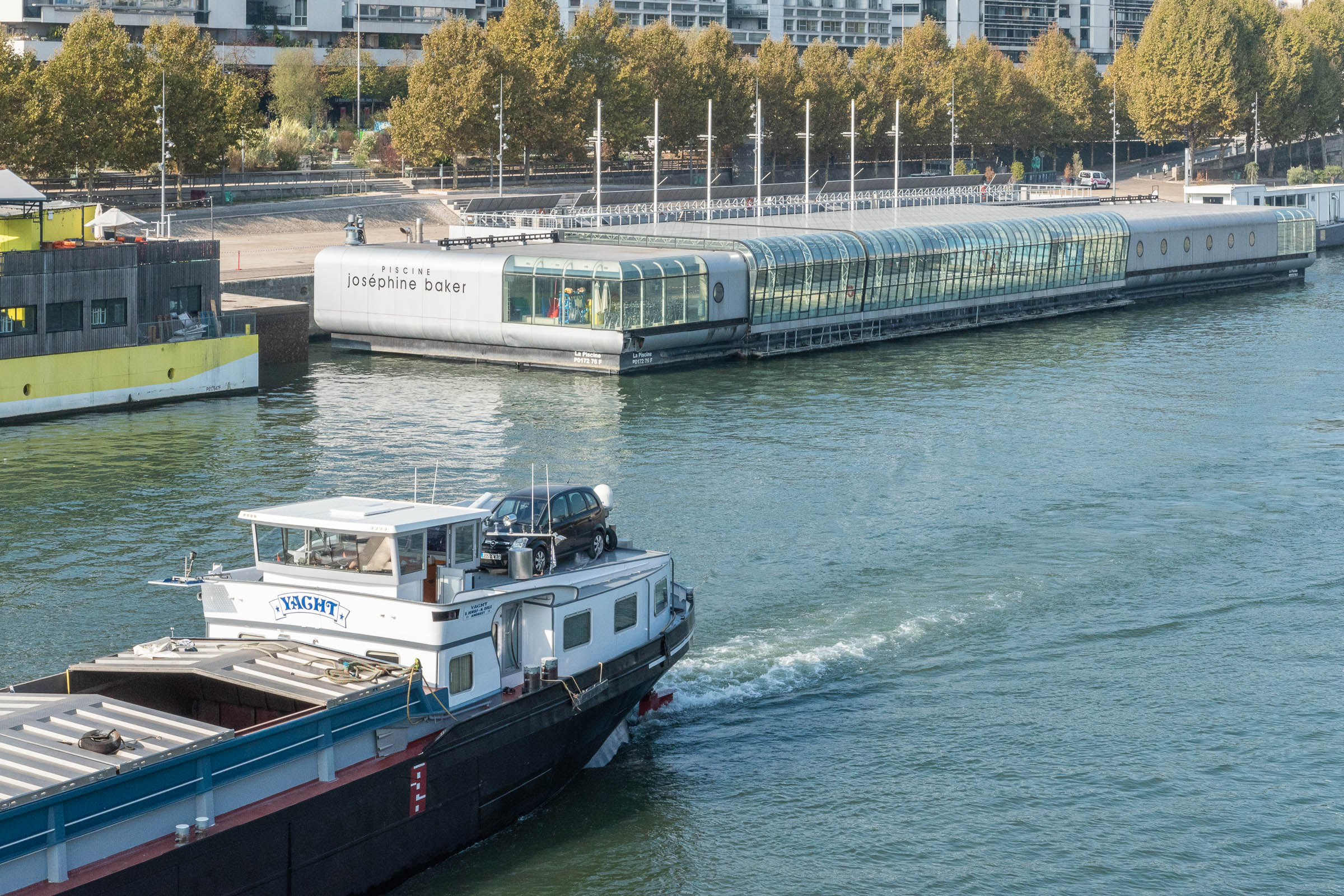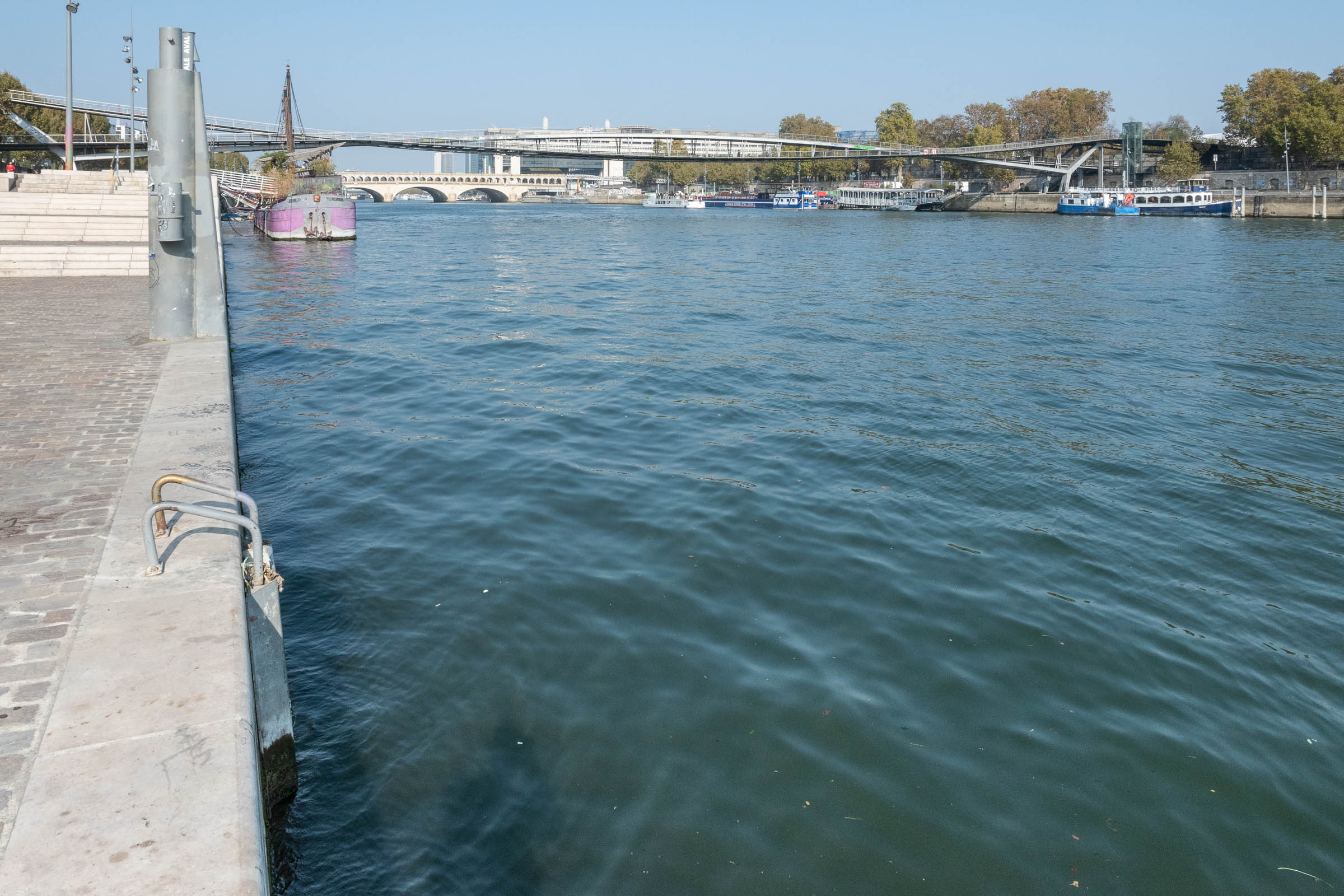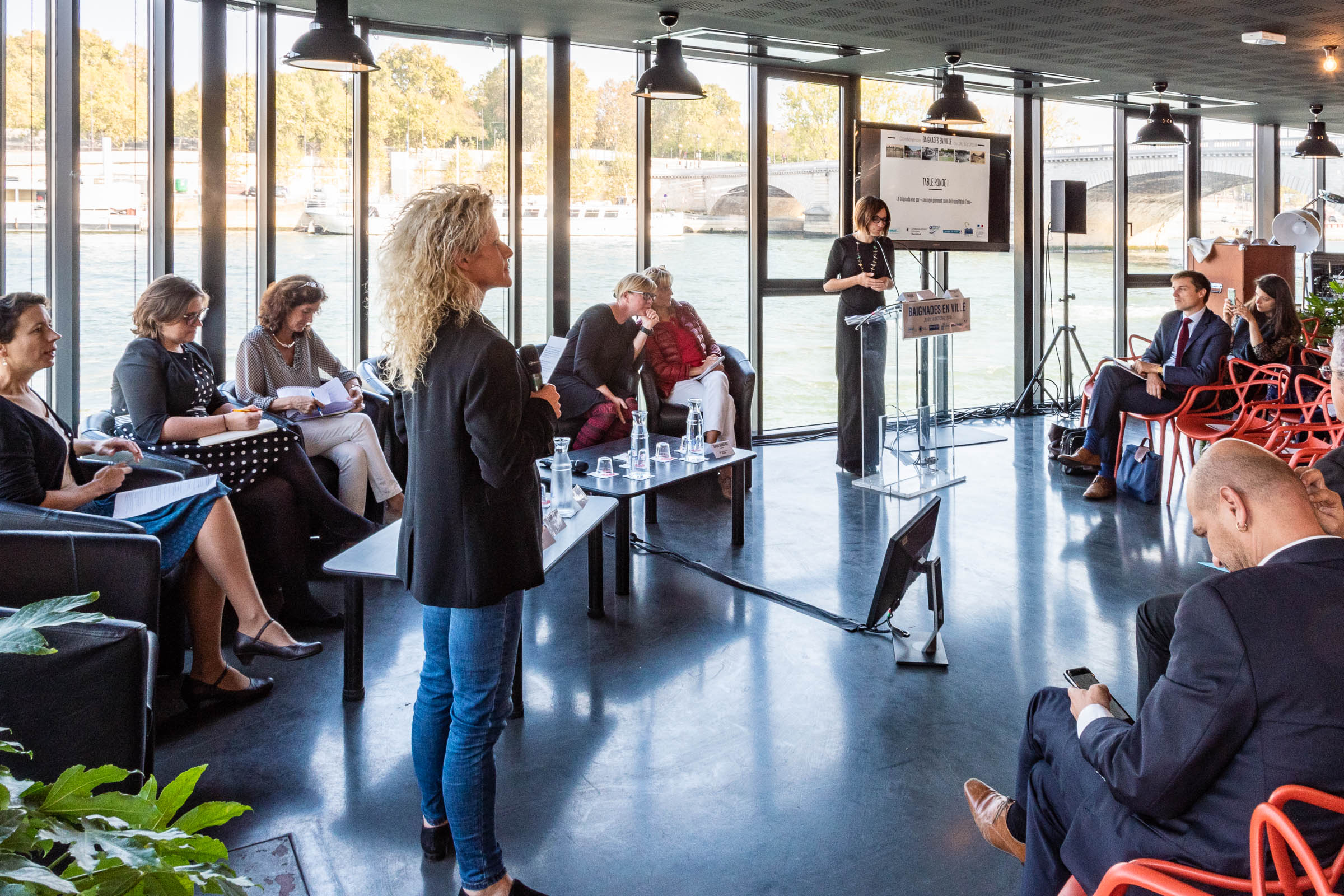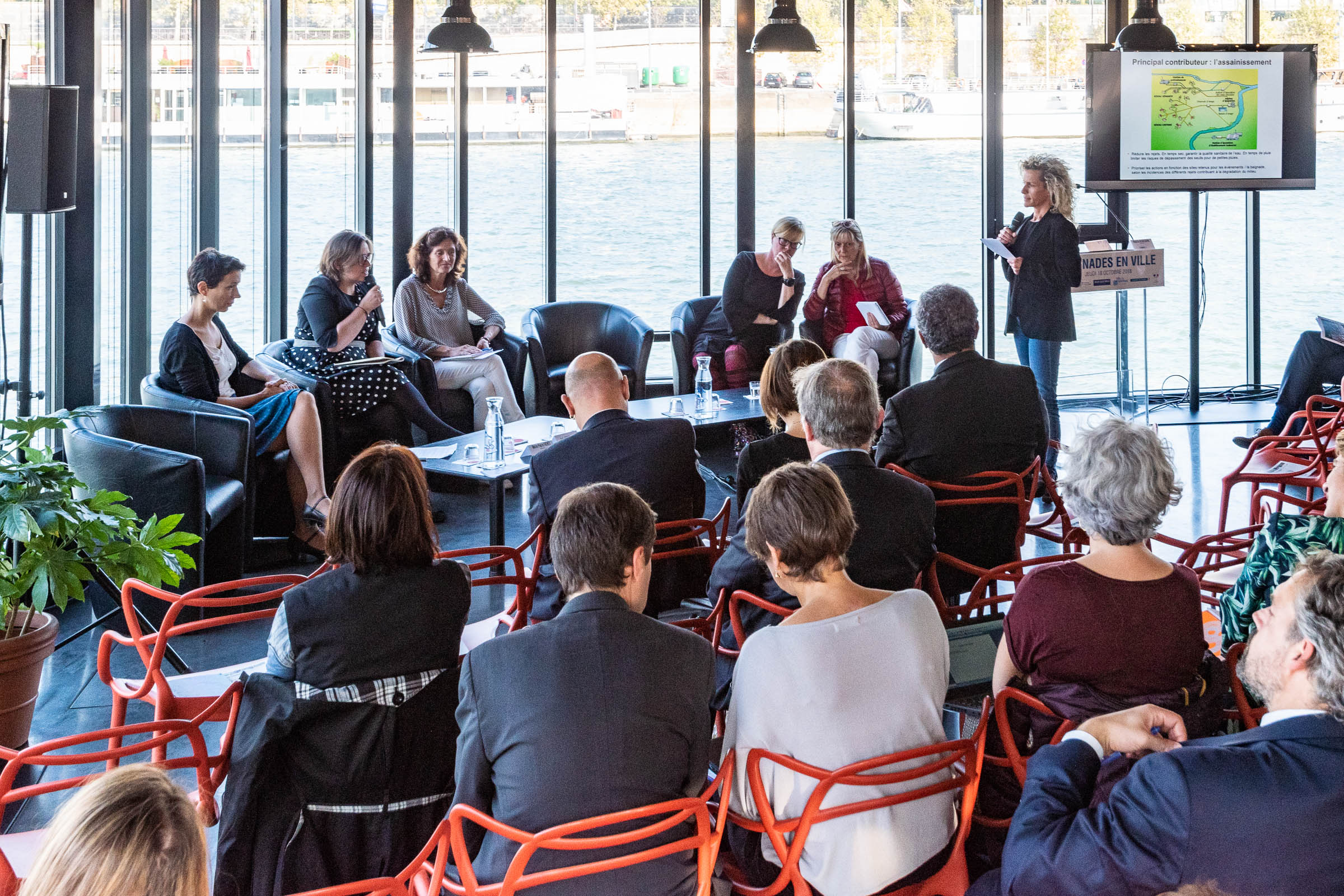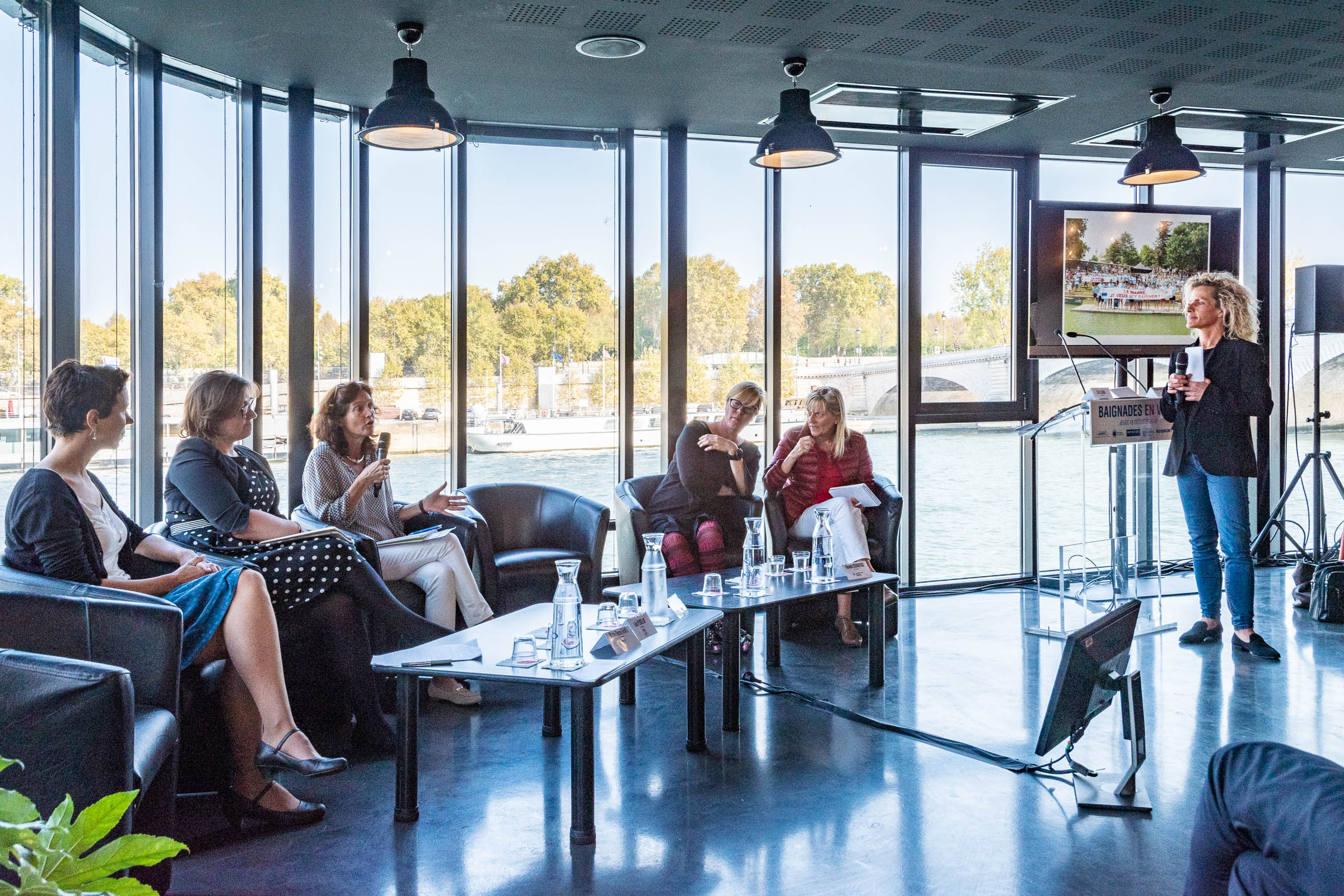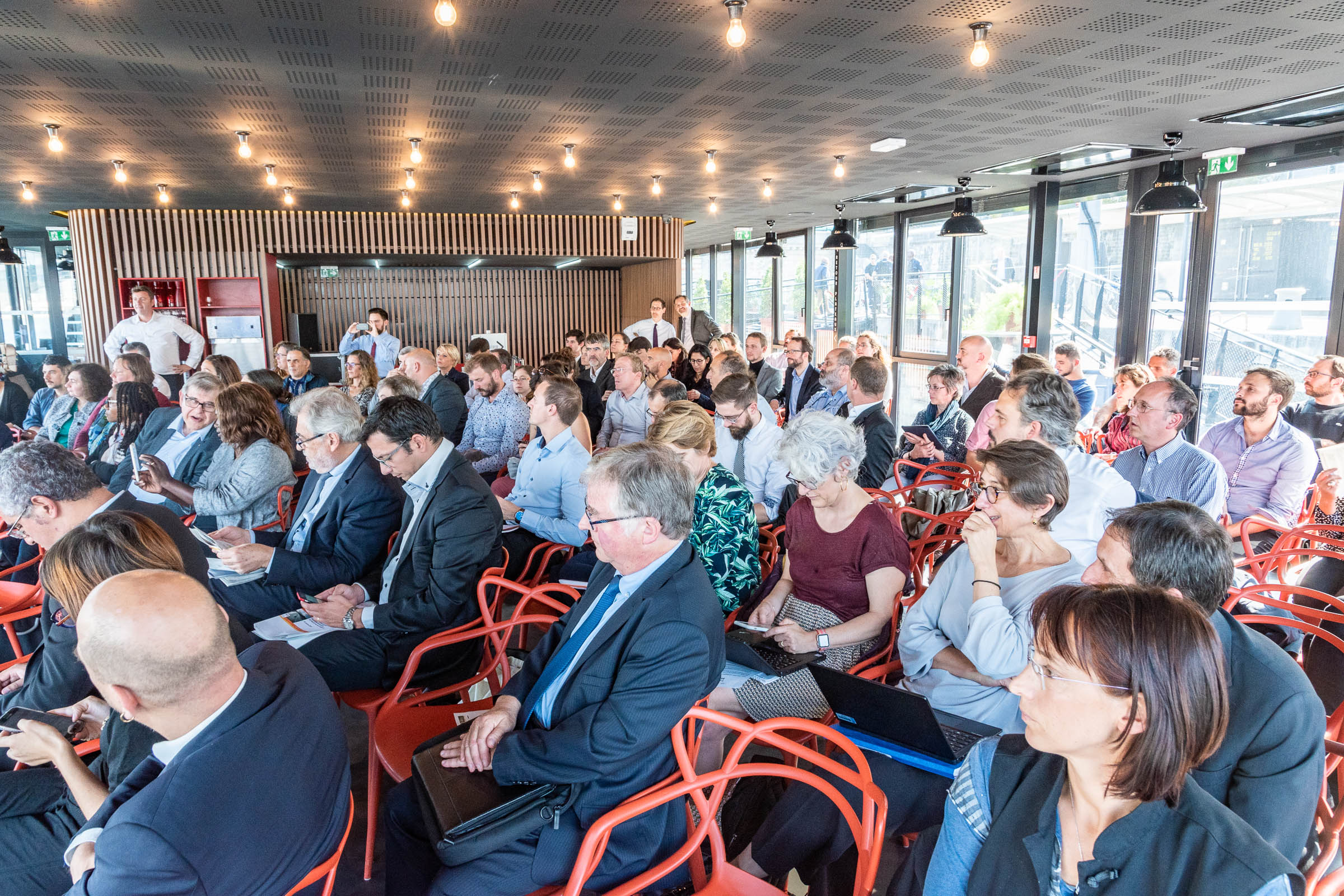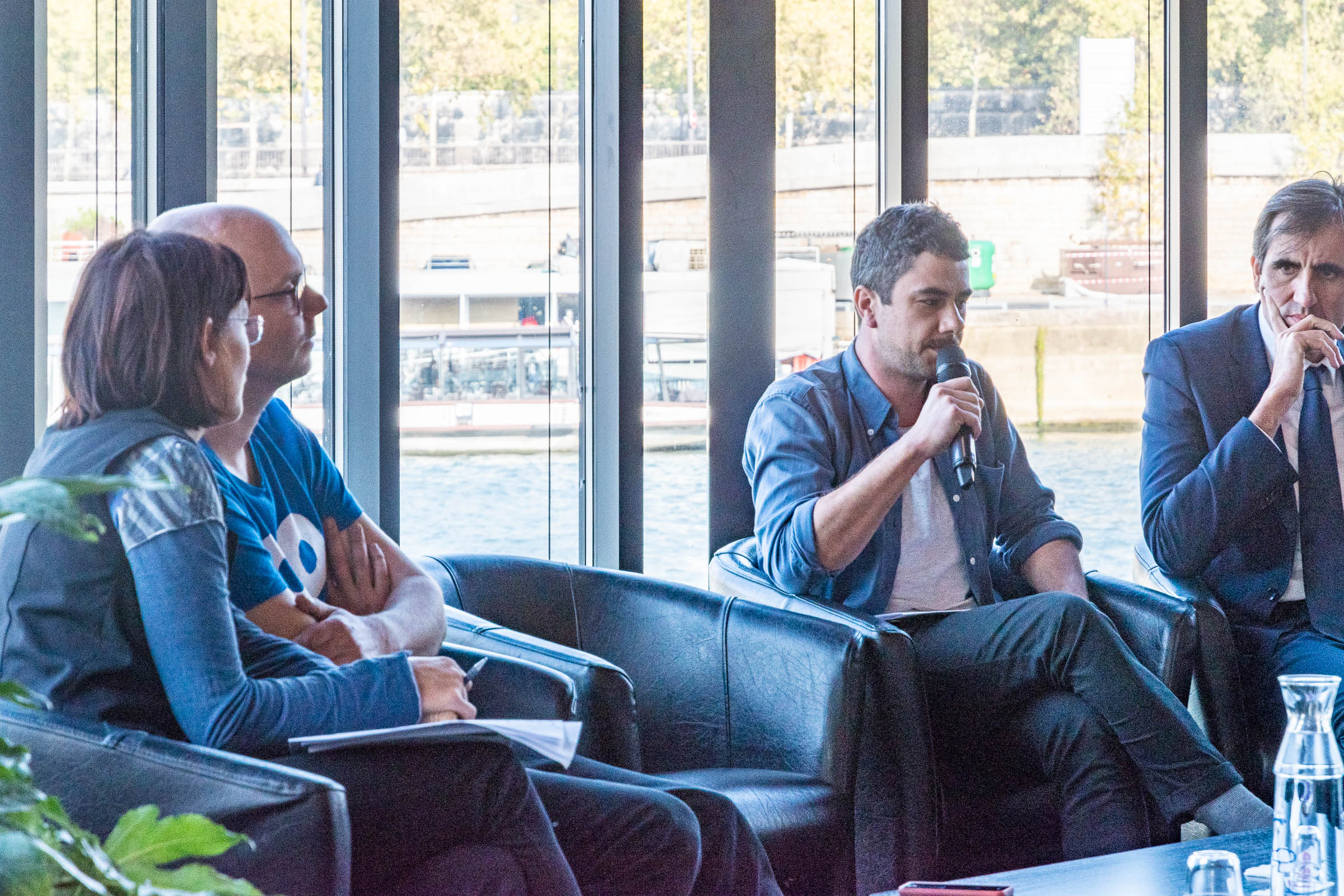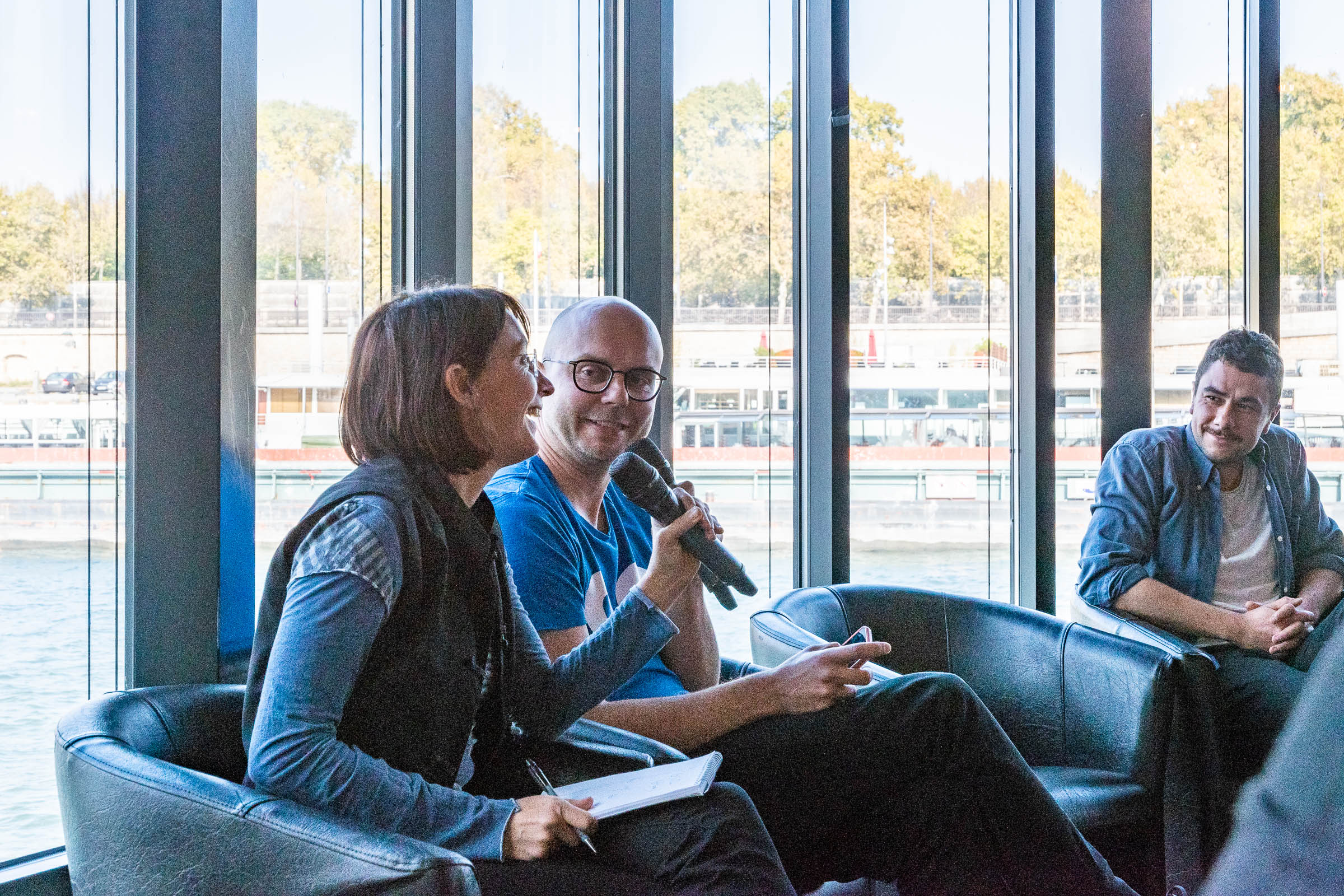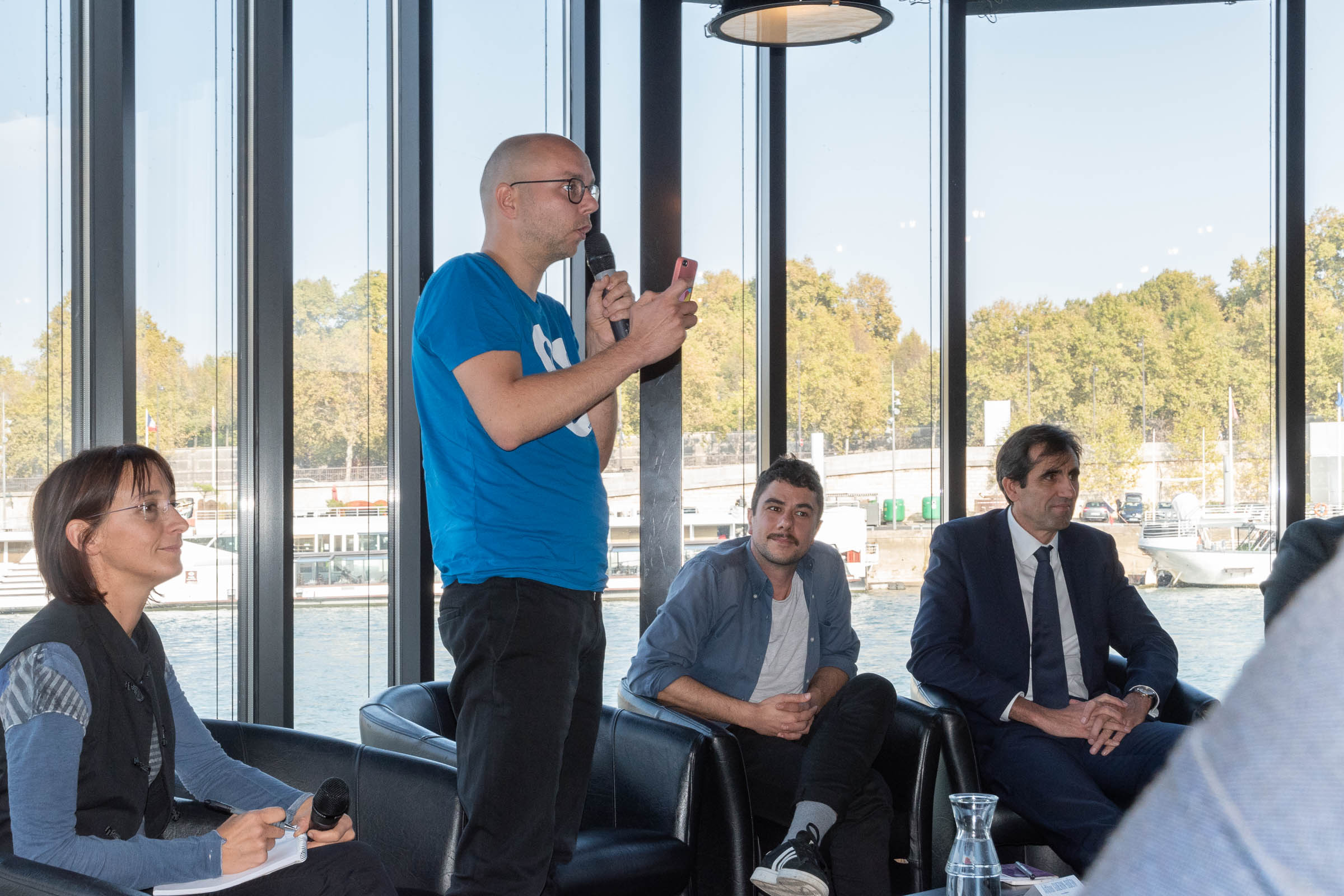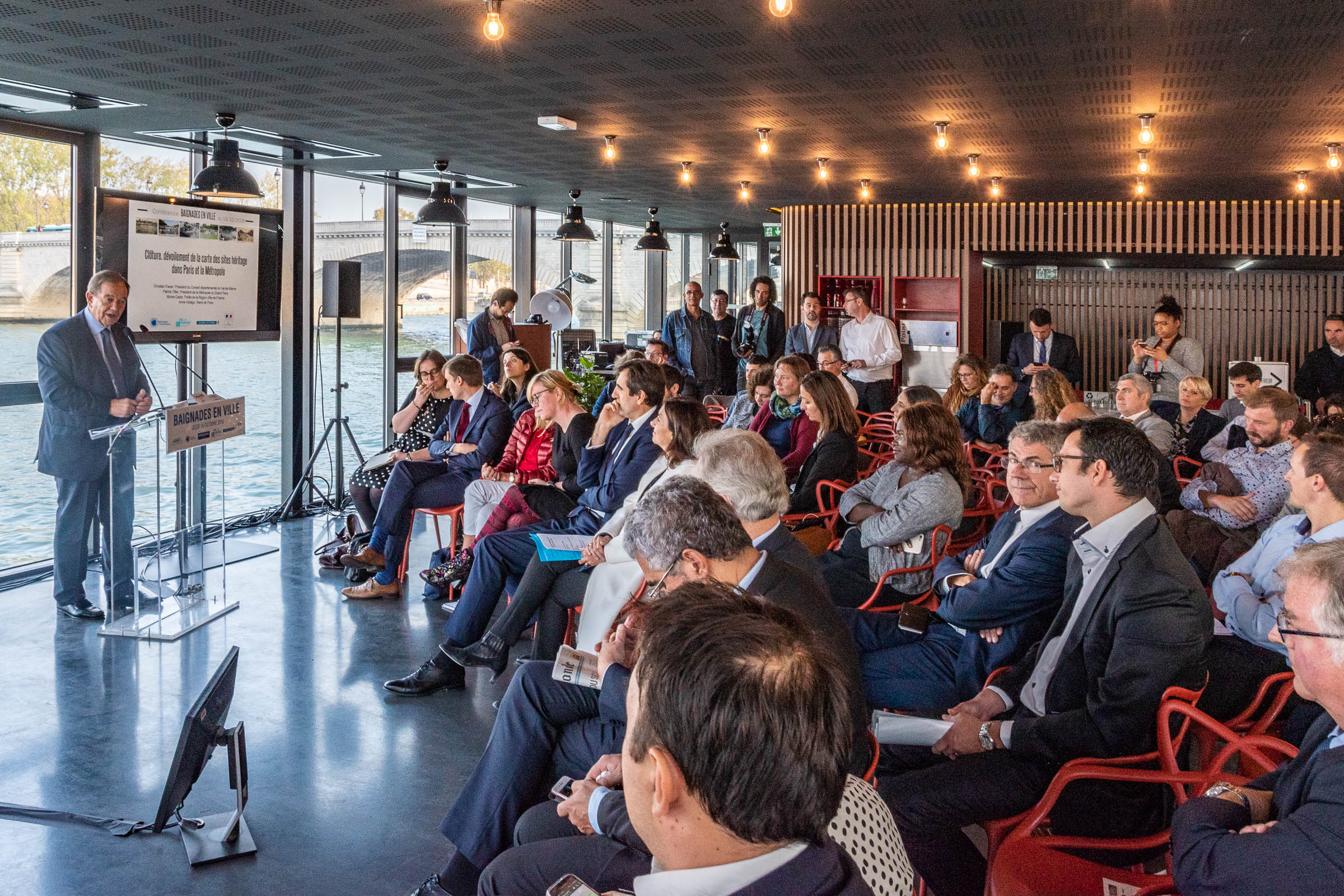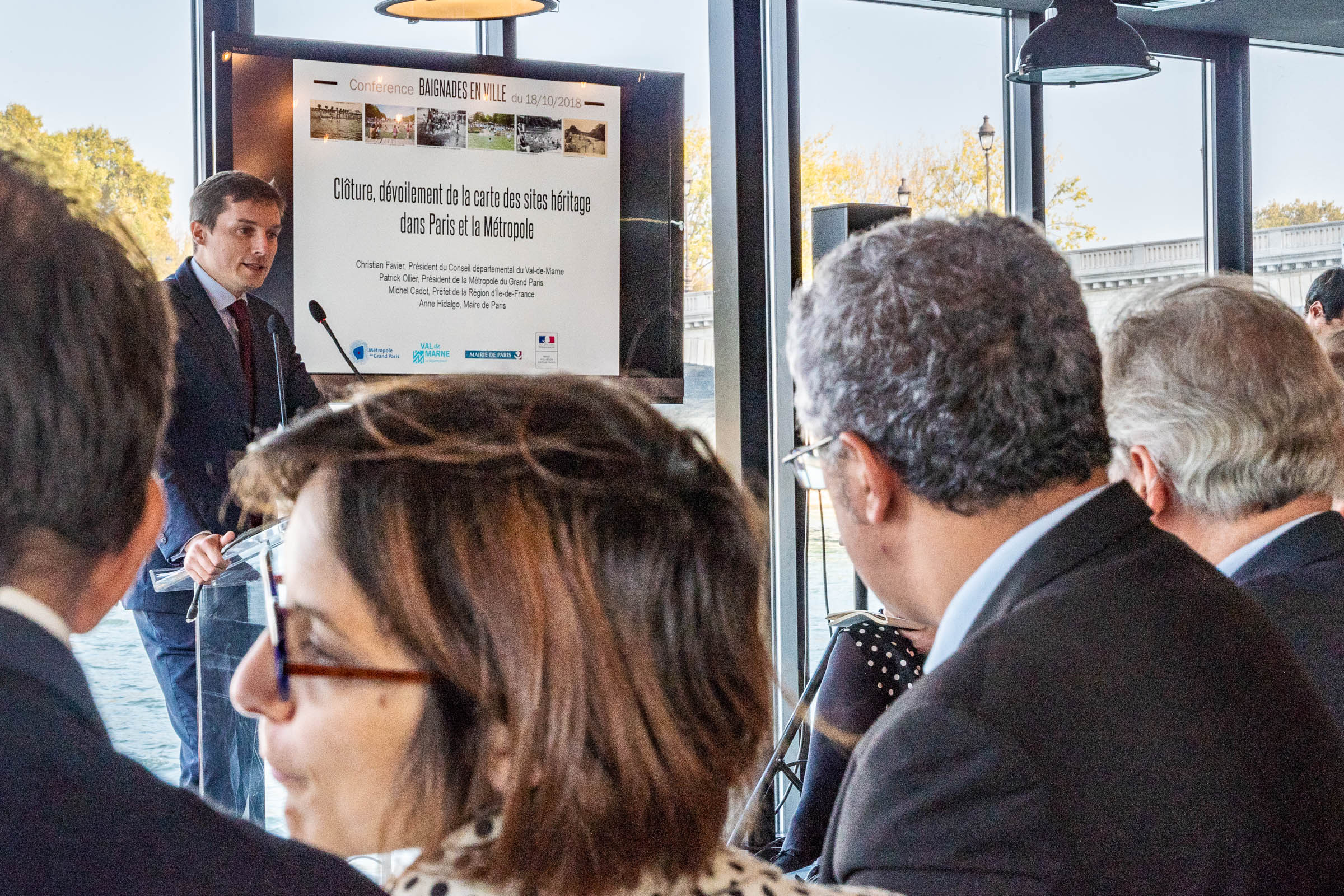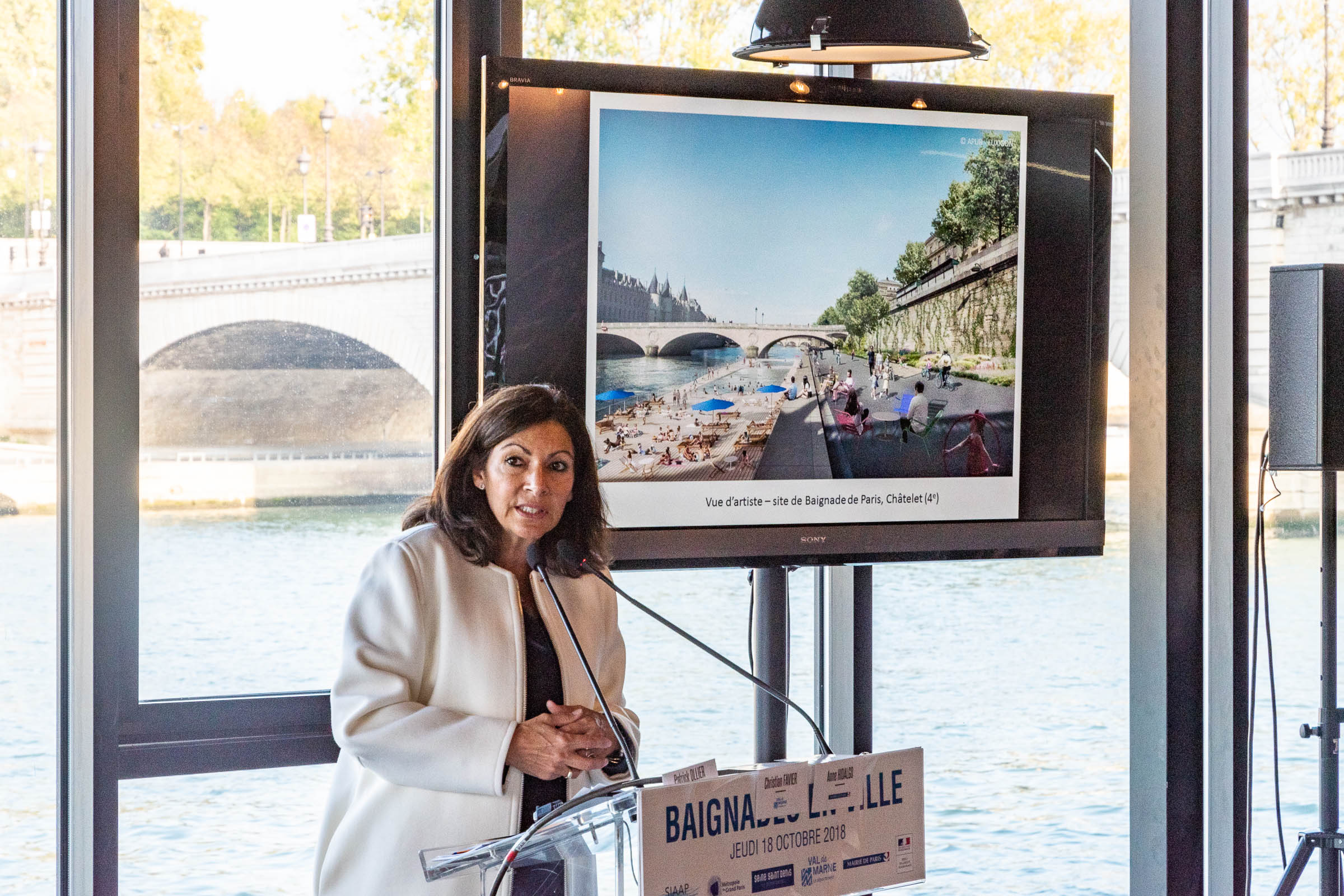BAIGNADE EN VILLE
EN
POOL IS COOL was invited to “Baignade en Ville” (Swimming in the city), a conference on outdoor swimming in existing waters, organized by the City of Paris.
Several organisations and administrations work on the goal to make Paris more swimmable, both in the rivers Seine and Marne but also in the numerous canals and bassins. The driving force behind this ambition are the Olympic Games in 2024. It’s foreseen to hold the long-distance swim and triathlon competitions in the Seine. In parallel, permanent swimming places in the river are seen as an important benefit for the living quality in the dense metropolis.
FR
POOL IS COOL a été invité à «Baignade en Ville», une conférence sur la baignade en plein air dans les eaux existantes, organisée par la Ville de Paris.
Plusieurs organisations et administrations travaillent dans le but de rendre Paris plus baignable, à la fois dans les fleuves Seine et Marne, ainsi que dans les nombreux canaux et bassins. Les Jeux olympiques de 2024 sont la force motrice de cette ambition. Il est prévu de tenir les compétitions de natation de longue distance et de triathlon dans la Seine. En parallèle, les lieux de baignade permanents dans la rivière sont considérés comme un avantage important pour la qualité de vie dans la métropole dense.
NL
POOL IS COOL was uitgenodigd voor "Baignade en Ville" (Zwemmen in de Stad), een conferentie over zwemmen in openlucht in de bestaande wateren, georganiseerd door de stad Parijs.
Verschillende organisaties en administraties werken aan het doel om in Parijs nog beter in de bestaande waters te kunnen zwemmen, zowel in de rivieren Seine en Marne, maar ook in de talrijke kanalen en bassins. De drijvende kracht achter deze ambitie zijn de Olympische Spelen in 2024. Het is de bedoeling om de wedstrijden voor langeafstandzwemmen en triatlon in de Seine te houden. Parallel worden permanente zwemplaatsen in de rivier gezien als een belangrijk punt voor de leefkwaliteit in de dense metropool.
Lees het verslag over het evenement hieronder in het Engels.
Paul of POOL IS COOL was accompanied to Paris by Gaetan Cuartero Diaz and Elodie Nise of the Brussels Environmental agency (IBGE/BIM). They are working on the water quality of the existing waters in Brussels and were interested to learn how Paris deals with it today and approaches the challenges of clean water for swimming in the future. Before the conference we had some time to visit some interesting places in Paris.
Paul de POOL IS COOL était accompagné à Paris par Gaetan Cuartero Diaz et Elodie Nise de Bruxelles Environnement (IBGE). Ils travaillent sur la qualité de l'eau des eaux existantes à Bruxelles et étaient intéressés à savoir comment Paris s'en occupe aujourd'hui et aborde les défis de l'eau propre pour la baignade dans le futur. Avant la conférence, nous avons eu le temps de visiter des lieux intéressants à Paris.
Paul of POOL IS COOL werd naar Parijs begeleid door Gaetan Cuartero Diaz en Elodie Nise van het Leefmilieu Brussel (BIM). Hun werk focust op de waterkwaliteit van de bestaande wateren in Brussel en zij waren geïnteresseerd om te zien hoe Parijs het vandaag aanpakt en de uitdagingen van proper water benadert om in de toekomst te zwemmen. Vóór de conferentie hadden we de tijd om enkele interessante plekken in Parijs te bezoeken.
First we passed by the Piscine de Buttes-aux-Cailles. It was one of the first public swimming pools and consists today of an interior pool and two open air pools. The pool was renovated recently, the modern water treatment facilities are more compact than before which freed up space in the basement. That space is rented to a datacenter, the heat which is produced by the servers is today used to heat the swimming pools, making outdoor swimming possible throughout the whole year. Read more about it here.
We later discovered the shore of the Seine close to the location of the conference. It’s used for all kinds of activities, mainly cultural events and restaurant boats, but we also passed by two outdoor swimming pools. A small one was part of a floating hotel. The other one is the famous Piscine Josephine Baker. It’s a floating pool with a retractable roof. Currently the pool undergoes a refurbishment. It was interesting to see how all kinds of urban life, from industrial transport to leisure activities, make use of the space that the Seine offers.
Nous sommes d'abord passés par la piscine de Buttes-aux-Cailles. C'était l'une des premières piscines publiques et se compose aujourd'hui d'une piscine intérieure et de deux piscines en plein air. La piscine a été rénovée récemment, les installations modernes de traitement de l'eau sont plus compactes qu'auparavant, ce qui a permis de libérer de l'espace au sous-sol. Cet espace est loué à un centre de données. La chaleur produite par les serveurs est aujourd'hui utilisée pour chauffer les piscines, ce qui permet de nager en plein air toute l'année. En savoir plus à ce sujet ici.
Nous avons ensuite découvert la rive de la Seine à proximité du lieu de la conférence. Il est utilisé pour toutes sortes d’activités, principalement des événements culturelles et des bateaux-restaurants, mais nous avons également passé près de deux piscines extérieures. Un petit faisait partie d'un hôtel flottant. L'autre est la fameuse Piscine Josephine Baker. C’est une piscine flottante avec un toit escamotable. Actuellement, la piscine subit une rénovation. Il était intéressant de voir comment tous les types de vie urbaine, des transports industriels aux loisirs, exploitent l’espace offert par la Seine.
Eerst passeerden we de Piscine de Buttes-aux-Cailles. Het was een van de eerste openbare zwembaden en bestaat vandaag uit een binnenbad en twee openluchtzwembaden. Het zwembad is onlangs gerenoveerd, de moderne waterbehandelingsfaciliteiten zijn compacter dan voorheen, waardoor er ruimte vrij kwam in de kelder. Die ruimte wordt verhuurd aan een datacenter, de warmte die door de servers wordt geproduceerd, wordt tegenwoordig gebruikt om de zwembaden te verwarmen, waardoor het hele jaar door buiten kan worden gezwommen. Lees hier meer over.
Later verkenden we de oever van de Seine dicht bij de locatie van de conferentie. Het wordt gebruikt voor allerlei soorten activiteiten, voornamelijk culturele evenementen en restaurantboten, maar we passeren ook twee openluchtzwembaden. Een kleine maakte deel uit van een drijvend hotel. De andere is de bekende Piscine Josephine Baker. Het is een drijvend zwembad met een opengaand dak. Momenteel ondergaat het zwembad een opknapbeurt. Het was interessant om te zien hoe allerlei soorten stadsleven, van industrieel transport tot vrijetijdsactiviteiten, gebruik maken van de ruimte die de Seine biedt.
The conference
The conference consisted of two round tables. The first was joined by authorities from Paris, the greater Paris region and Munich, concerned with the management of the water quality. It became clear that the Seine, as it is today, is not yet ready for swimming. Large efforts for a better water quality are still necessary, mostly related to the collection and treatment of sewage water including the prevention of overflows of the sewage system into the river at moments of heavy rainfall. The problems seem to be identified and the several stakeholders presented their approaches to tackle them.
Munich was an interesting example that showed how much persistence is necessary to execute such large scale infrastructure works related to the public space, but it also showed the great benefits for the city with the many kilometers of new beach along the river Isar. An important part of the argumentation for the works was not only the augmented living quality but also the improved flooding protection for the city centre. Today, everyone can enjoy the Isar as a place to relax, exercise and, of course, enjoy swimming in the water.
What draw attention from the audience was the fact that there is no safety surveillance in Munich at these beaches, it’s up to the individual person to take up the responsibility for their actions. The people are expected to be able to judge the risks of the water by themselves in this clear context. This concept is diametrically different to the way in which responsibility is dealt with in France (and Belgium), where responsibility is taken up by an authority which, in order to limit risks, prohibits free use or access as long as not all imaginable safety measures are in place. This, of course, limits the active appropriation of public space by the citizens and requires action by authorities to make things possible.
The second table, which was joined by POOL IS COOL, discussed swimming in the city with initiatives that fight for urban swimming as a public right for everyone. Two organizations represented by former professional swimming athletes, Open Swim Stars and the French Swimming Associations, strive for the re-introduction of long distance swimming events in the Seine in a way the existed in the past, as mass sports events comparable to the marathon runs held in many cities worldwide today. Running is their reference as an activity that moved from the athletic arena’s into the public space of parks, something they hope will happen with outdoor swimming, from the pools to the rivers and canals.
More related to our approach is the Laboratoire des Baignades Urbaines Experimentales, a loose collective of activists who, 4 years ago, jumped into the Bassin de la Villette during a hot summer and, through this pirate action, convinced the the city of Paris to install the by now famous pool “Baignade de la Villette” in the water of the basin.
Our opening statement, that swimming in open air is not possible at all in Brussels, was met by shared disbelief. A quick ad-hoc enquete revealed that everyone in the audience is regularly swimming outdoors, whether it’s invitees, politicians, the present journalists or people working at the event location. Another proof for our statement that public outdoor swimming in Brussels will improve the life of everyone.
We further expressed that Paris is a reference for us in Brussels, both in terms of activism but also regarding the dedication with which the city, not least the mayor Anne Hidalgo, follow their path to make Paris a reference for outdoor swimming. It’s remarkable how the different levels of administration, authorities and politicians work together for this shared goal. An important role in the formation of this broad coalition play the Olympic games in 2024 which inevitably require a cooperation of all stakeholders for the internationally given promise of swimming in the Seine to come true.

